THE CHALLENGE
Help K-12 graders cultivate critical thinking skills through reading, writing, and collaboration.
THE OUTCOME
A web-based learning platform and grade-level appropriate curriculum that incorporates individualized reading content, writing practice, teacher-assisted exercises, and peer-to-peer collaboration centered around the CERCA literacy framework.
Overview of the Problem
How Might We improve the litearcy learning experience for students in our public school system?
Traditional literacy instructions in K-12 classrooms are not preapring students to succeed in today’s ever-changing and technologically advanced world. To help students develop strong critical thinking skills, ThinkCERCA team set out in 2012 to build an online learning platform centered around a literacy framework CERCA (Claim, Evidence, Reasoning, Counterargument, Audience). Today, it offers a set of digital tools and lesson plans to help educators teach critical thinking skills across a variety of subjects, including English language arts (ELA), math, social studies and science.
Users and Audience
- K-12 grade public school students
- Public school teachers
- School and district administrators
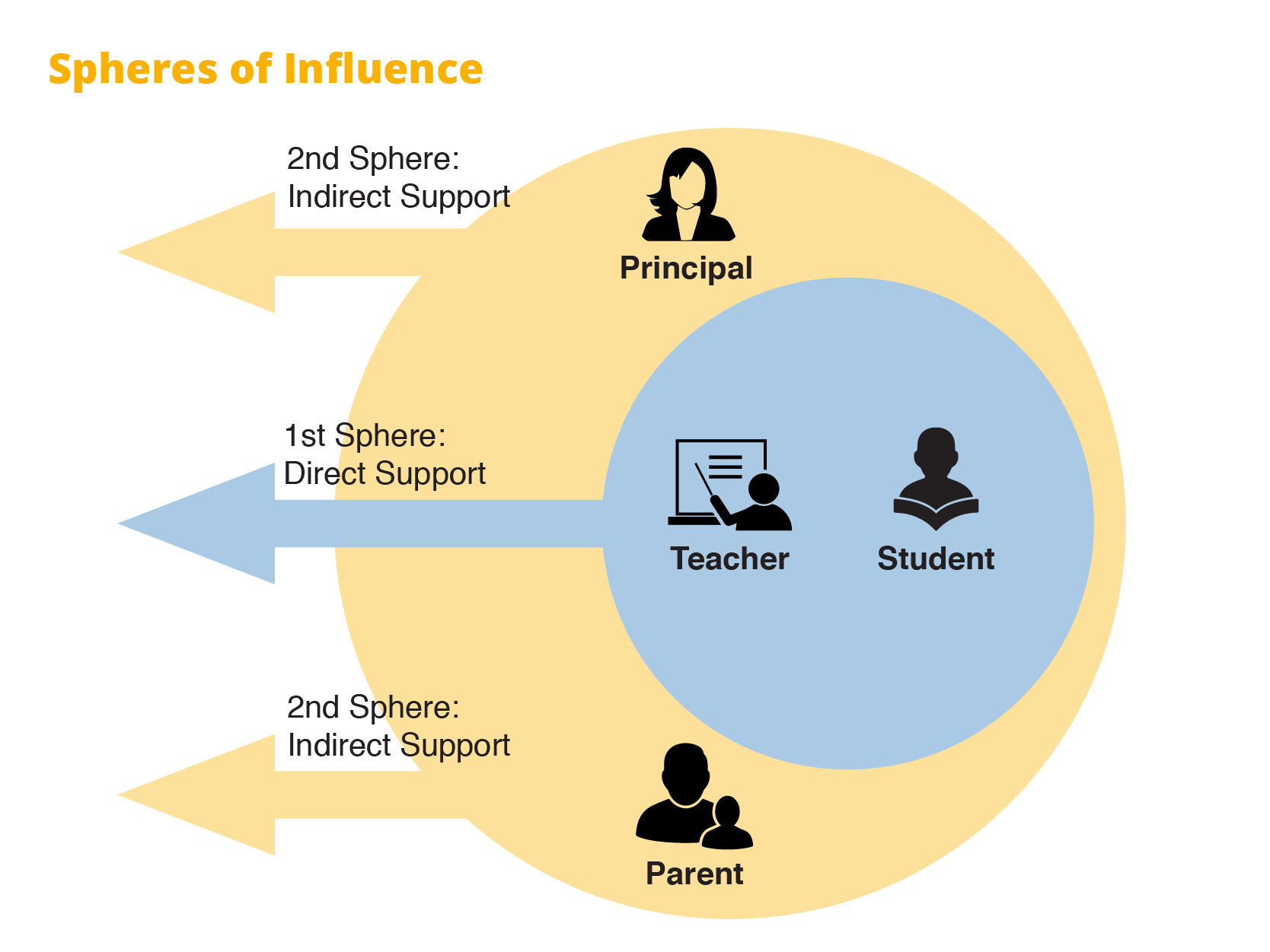
A Visualization of High Level Roles and Relationships
The Team and My Role
In 2013, ThinkCERCA was a ~7 person growing startup team in incubation consisted of 1 Founder/CEO, 1 CTO, 1 Marketing Lead, 1 Content Lead, 1 Software Engineer, and few seasonal roles. I served as the Interaction Design Intern and in house design voice for the duration of the 4 months internship.
Constraints
- Existing school regulations around technology adoption (e.g. hardware device availability impacted design for ideal session time and for collaboration routines)
- Teachers' varying technical compotency influenced teacher-student interactive feature designs
- Current school-day scheduling constraints: 45 minute class periods and multiple subject days that varied across grade levels affected both interaction and content design decisions
Design Process
Empathy Interviews
- We conducted empathy interviews with teachers, school administrators, and students in 4-12 grade literacy classrooms to understand their processes, challenges, and needs.
In-Conext Observations
- We conducted in classroom observations to understand existing literacy learning and teaching processes and challenges
- I facilitated product-comparison interviews with teachers and edtech creators during a collaborative EdTech User Conference that ThinkCERCA hosted, featuring ~30 learning technology teams from around the United States
Participatory Designs
- We facilitated live product learning and design feedback sessions with subsets of ~300 teachers in attendance at the EdTech User Conference
- I facilitated internal learning workshops to help the ThinkCERCA team adopt a Design Thinking perspective and to prototype key product intearctions together. For example, I created an intearctive exercise for the team to situate our product within the constraints of a typical school environment: 45 minute class periods across 5 days a week. We arrived at a very different design of product flow suitable for multi-session use.
Usability Testing
We conducted iterative classroom product testings with students and literacy teachers to understand their feedback in context. I translated these feedback into product design improvements for future development iterations.
Insights and Recommendations
Few insights I discovered from initial interviews and observations were:
- It is important to build a multi-session routine across the week rather than expecting completion of a reading and writing sequence within one classroom period.
- It is important to allow both teachers and students the flexibility to engage with reading, writing, and collaboration sections based on their lesson sequencing and individual learning needs
- Different grade levels have different needs for session time, weekly routine, and collaboration norms
- Most teachers needed more structured training in both technology use and software use before implementing a tech-assisted literacy routine in classroom independently
Few design recommendations I made were:
- Design a product workflow with real classroom constraints in mind: such as time, hardware, and space
- Better integrate with existing curriculum and learning schedule and state and local learning standards
- Keep balance between in person collaboration and in product collaborations to keep classroom lively and engaging
- Consider accomodating out of classroom individual learning needs
- Keep the core CERCA framework flexible: I helped redesign the Argument Builder to allow for more flexible construction of writing while keeping true to the spirit of CERCA framework
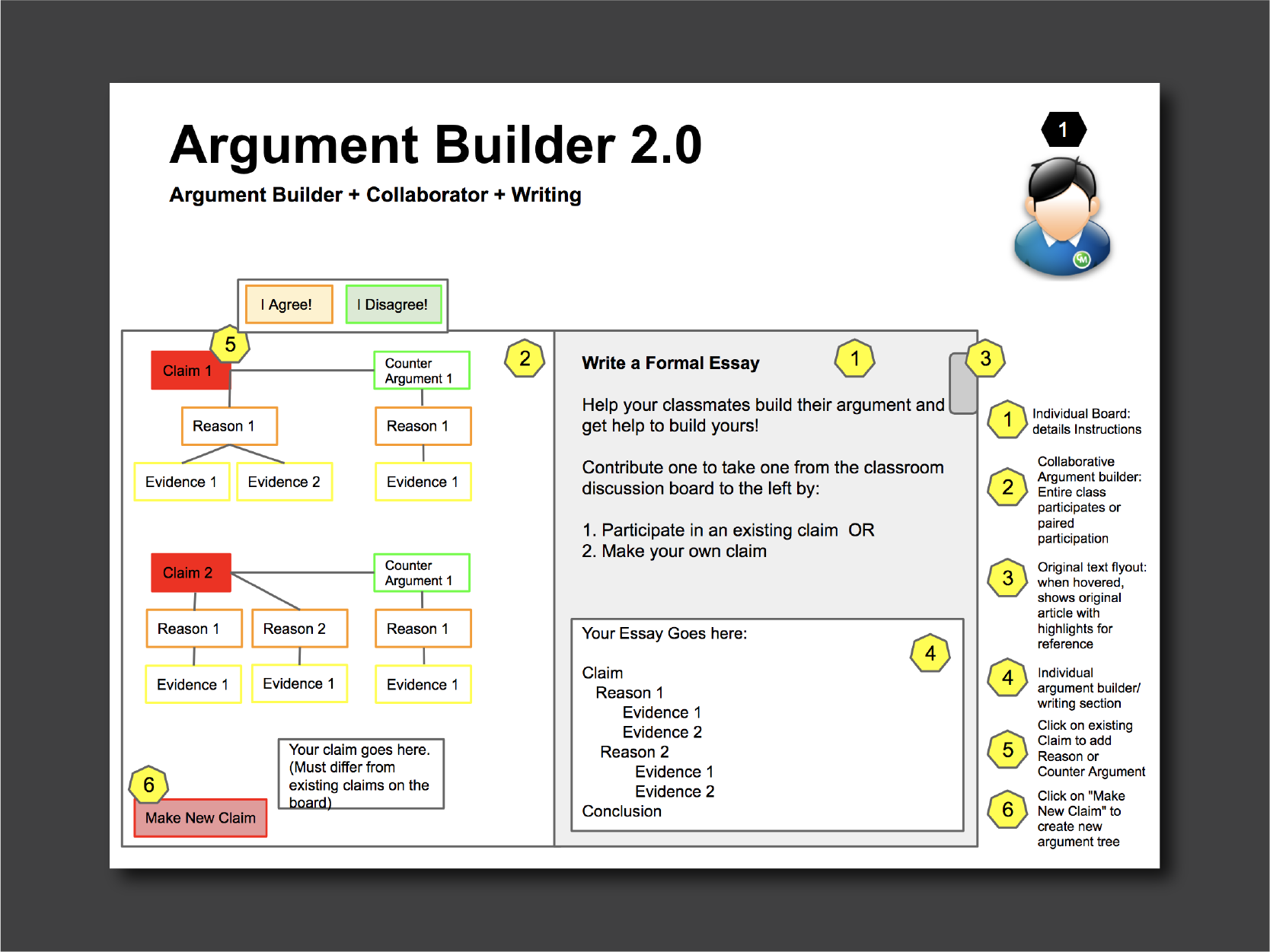
Prototype for a Collaborative Argument Builder feature
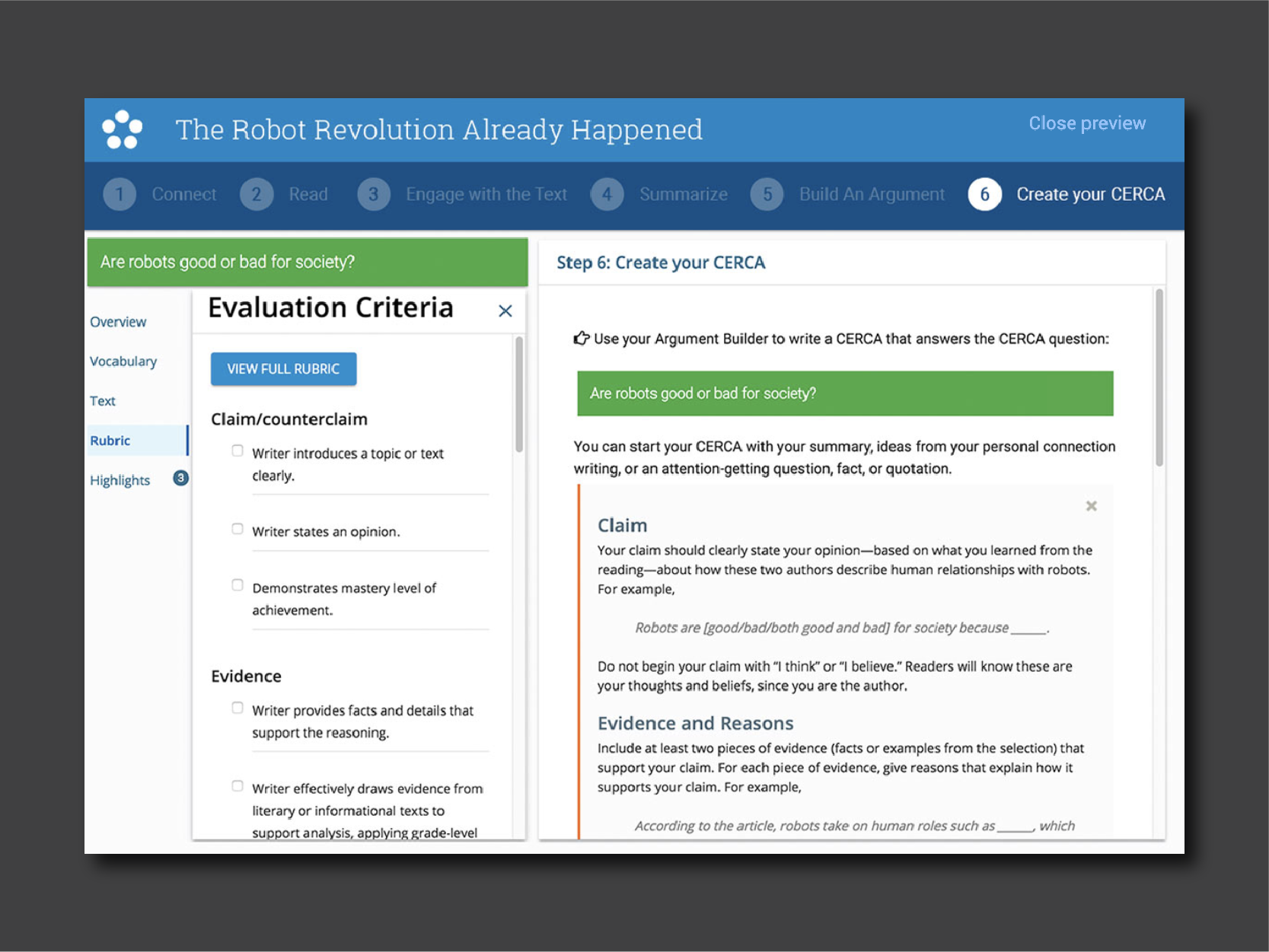
Current Argument Builder Feature in Product
Design Artifacts
- User Roles Interaction Map
- Information Architecture Maps
- User Personas
- User Journeys
- User Stories
- Product Flows
- Feature Interaction Maps
- High Level Feature Prototypes
- Detailed Interaction Mockups
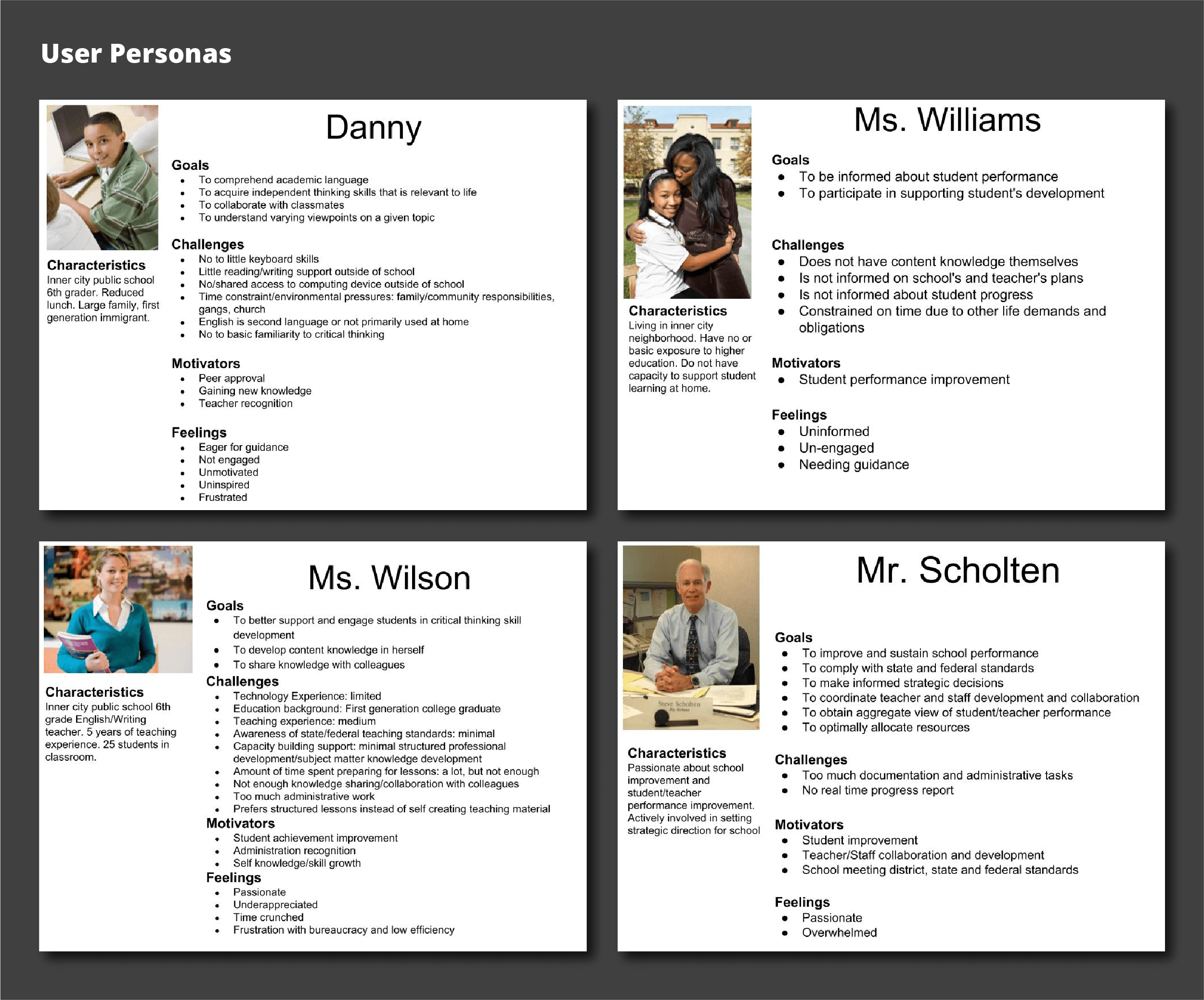
User Personas were created to help anchor our design decisions
Retrospective and Lessons Learned
- Design for complex social systems such as for education takes many years of efforts. It is a worthwhile process when done right: working with existing system structures to make incremental improvements are more valuable and effective than disruptive changes
- It is important to build on educators' and learners' existing routines
- Be aware of hardware and environmental constraints while designing software products
- It is important to test frequently in context: classroom in this case, and to hear feedback from both teachers and students
- In order to build a strong human-centered product, it is important to coach the product team into adopting a Design Thinking mindset first
Selected Works
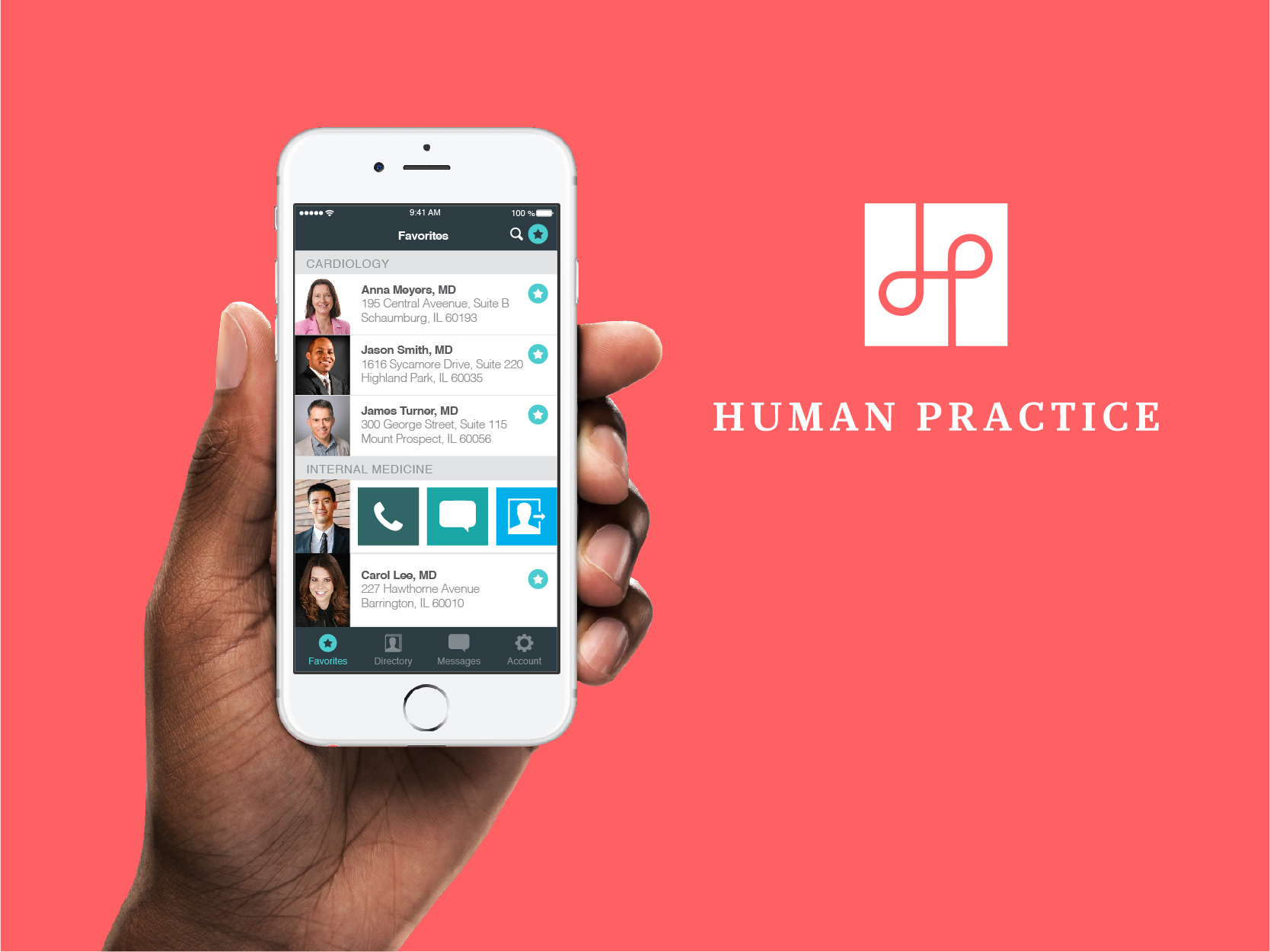
Human PracticeHealthcare Mobile Application
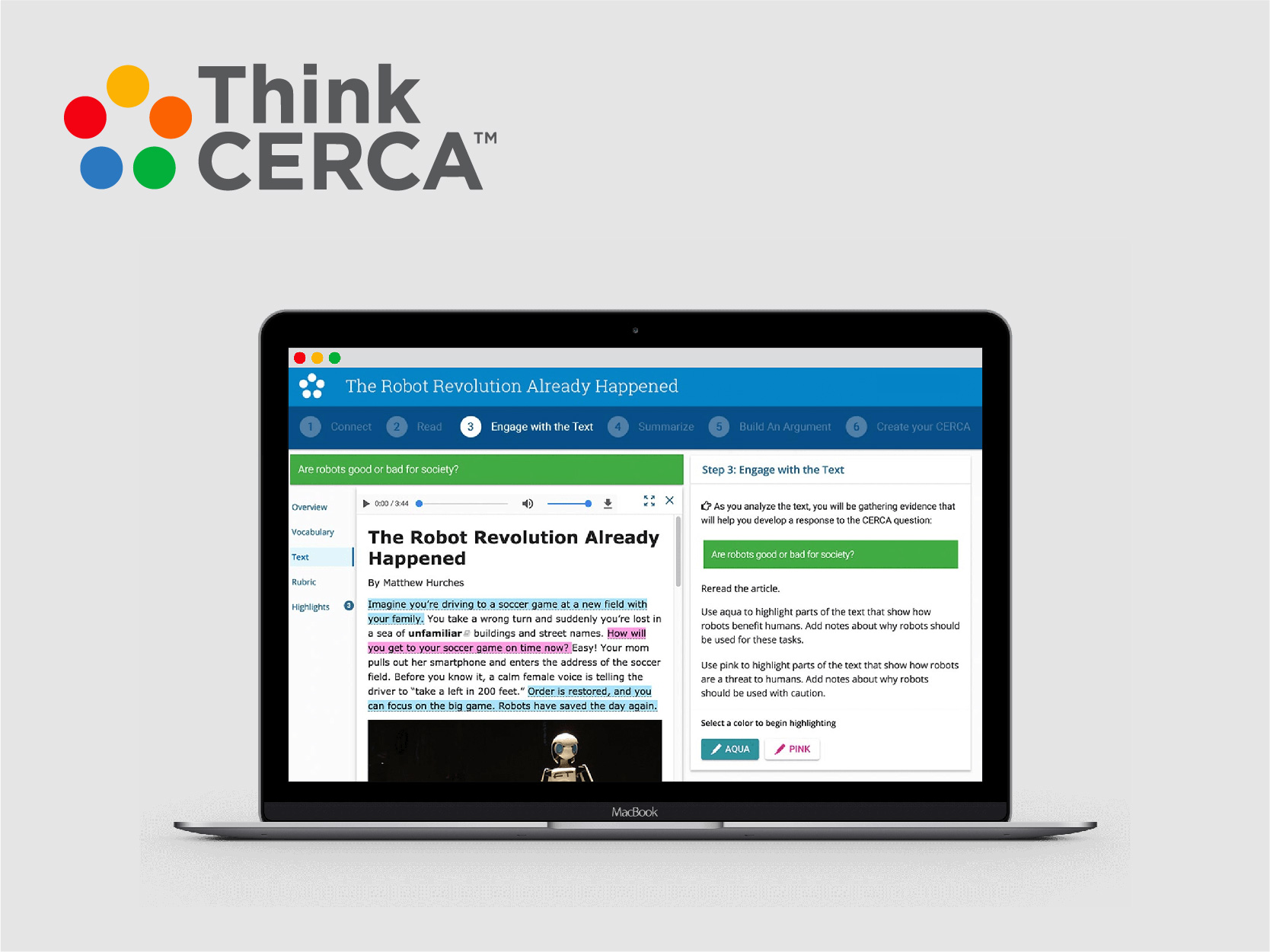
ThinkCercaOnline Learning Platform
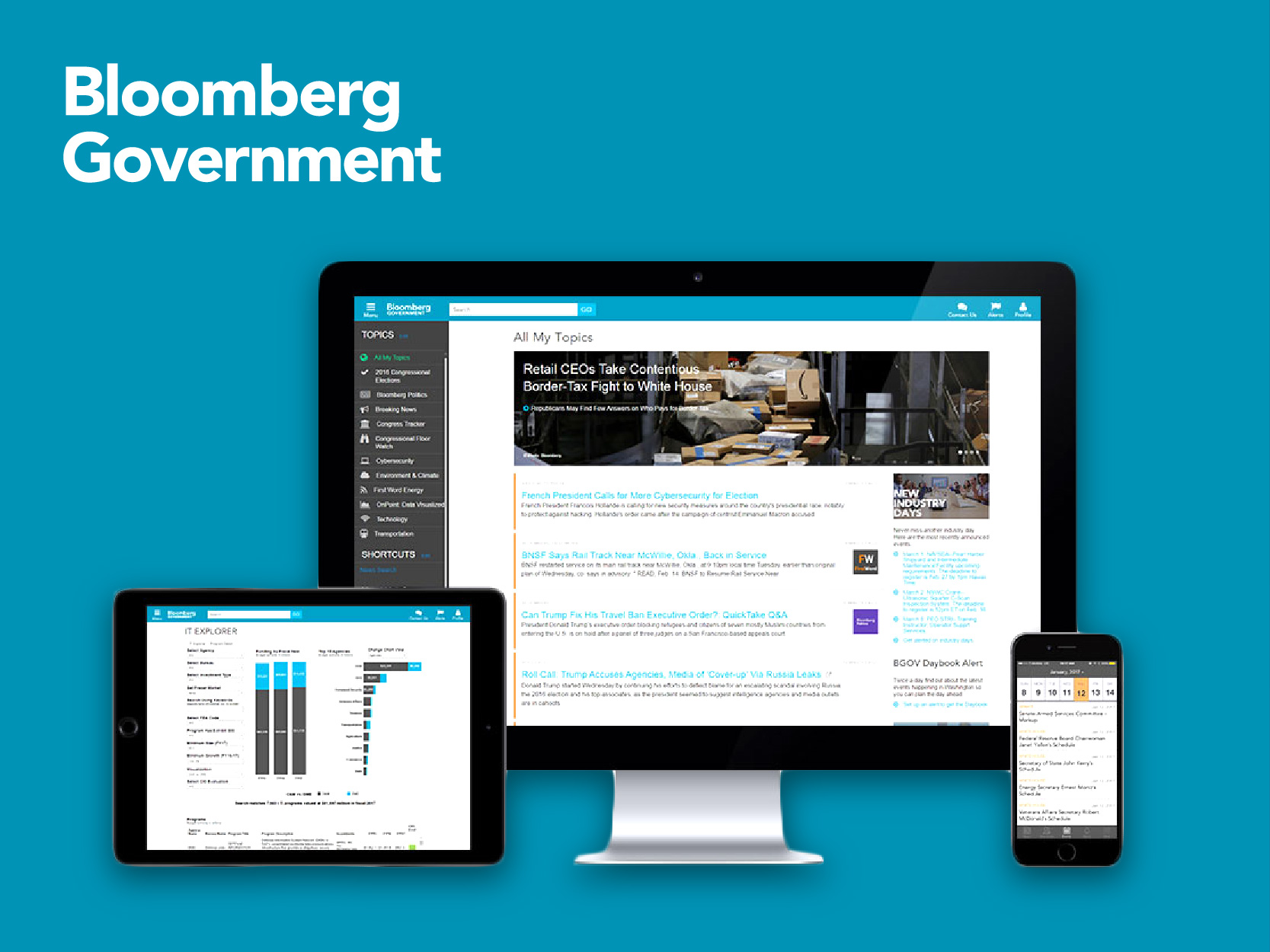
Bloomberg GovernmentWeb and Mobile Application

Nico TradingTrading Tools
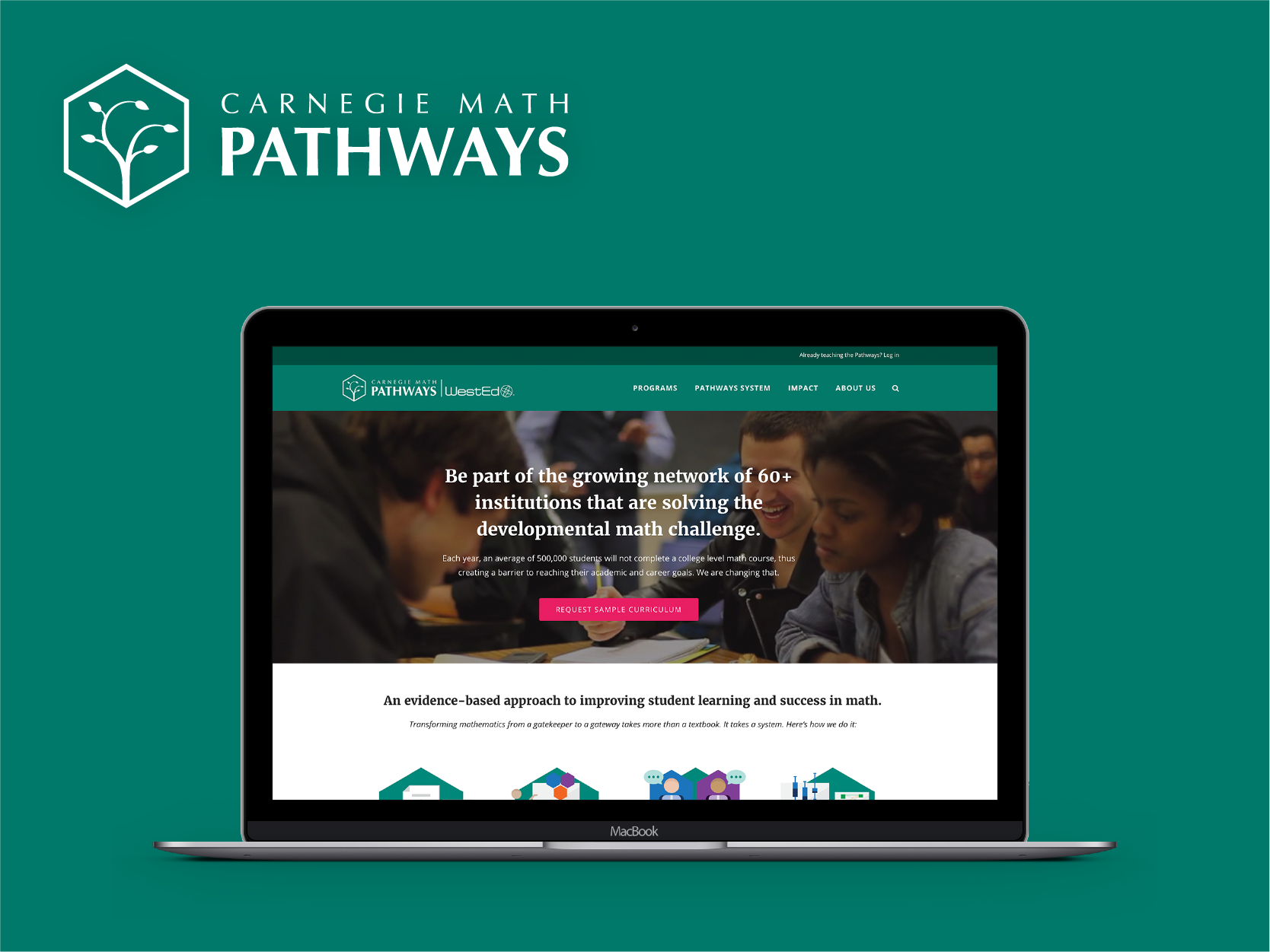
Carnegie Math PathwaysEducational Program/Initiative
Copyright © 2018 Mingzhu He
Thank you for stopping by! ♥